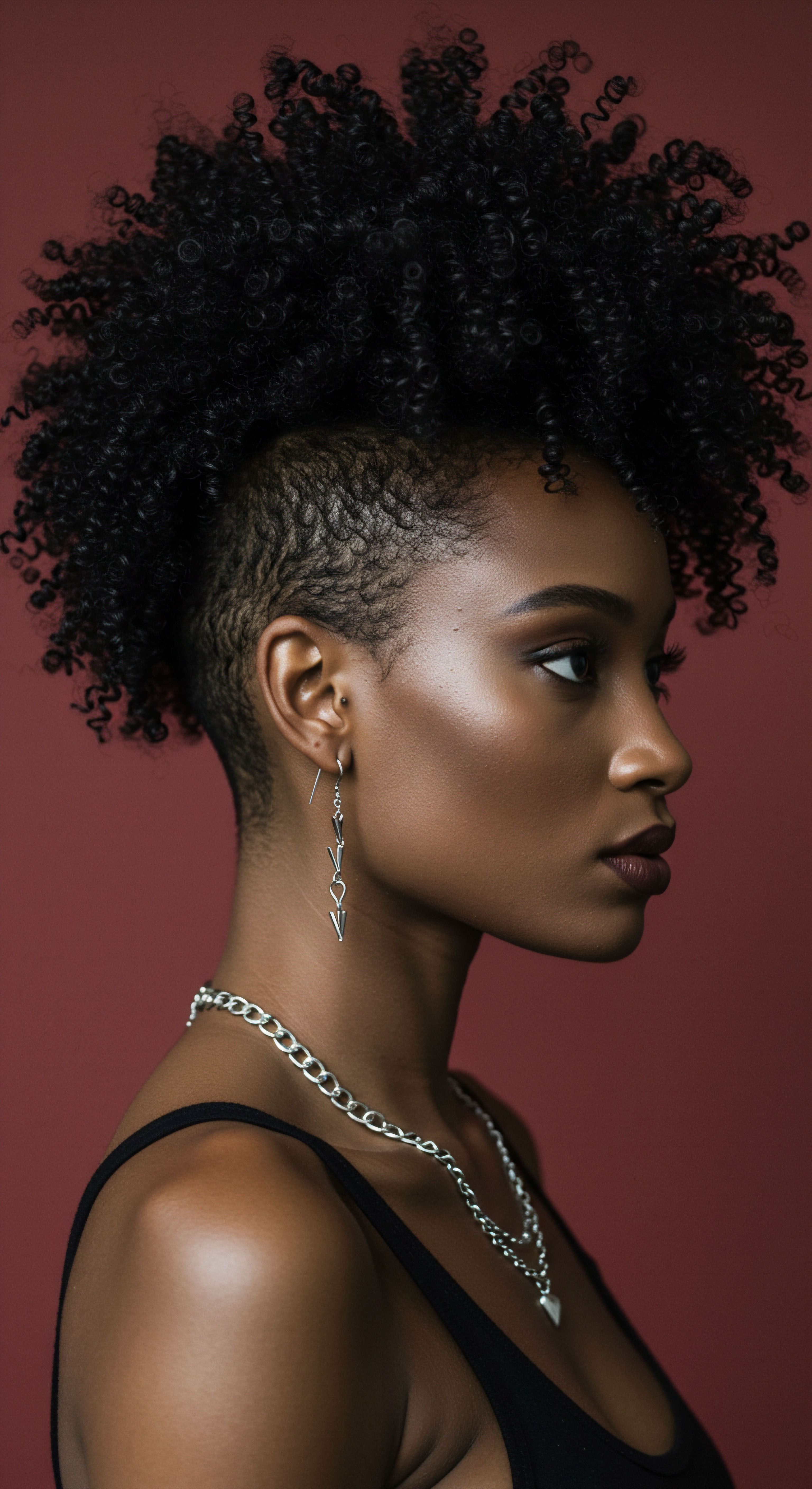
Roots
Before we can truly discern the profound impact of the Tignon Laws on the aesthetics of hair, we must first gently unearth the very soil from which these regulations sprung. A quiet contemplation of history’s currents reveals how deeply intertwined societal expectations became with the very strands that graced a woman’s head. The Tignon Laws, enacted in 1786 by Spanish colonial Governor Esteban Miró in Louisiana, represent a significant moment in the long, complex story of Black hair.
These laws were not merely about head coverings; they were a deliberate attempt to control and diminish the visible social standing of free women of color in New Orleans. Their elaborate hairstyles, often adorned with jewels and feathers, were seen as a challenge to the established racial and social order, particularly as these women attracted the attention of white men.
The free Black population in New Orleans, especially women, had achieved a degree of economic independence and social mobility that unsettled the colonial authorities. These women, known as gens de couleur libres, possessed a unique position, navigating a space between the enslaved and the white elite. Their vibrant displays of self-expression through dress and hair served as a powerful, unspoken assertion of their status and beauty, causing concern among white women who perceived them as rivals for status and attention.
The Tignon Laws sought to dim the radiance of free women of color, yet their spirit transformed a mandate of suppression into a canvas of defiant beauty.

What Was the Colonial Context?
Colonial Louisiana, particularly New Orleans, was a melting pot of cultures—French, Spanish, African, and Indigenous influences mingled, creating a society with a distinct social hierarchy. The French Code Noir, initially applied in Caribbean colonies and extended to Louisiana in 1724, laid down severe restrictions on the lives of people of color. When Spain assumed control of Louisiana in 1763, they introduced concepts such as coartación, which allowed enslaved people to purchase their freedom, contributing to the growth of the free Black community. This community, however, remained in an ambiguous position, free from slavery’s direct control but denied the full rights of white citizens.
The presence of free women of color who dressed with elegance and displayed elaborate hairstyles, often incorporating elements from their rich African and Caribbean heritage, became a visible symbol of this blurring social order. Their appearance challenged the visual cues that colonial powers wished to maintain, which were intended to clearly delineate racial and class boundaries. The Tignon Laws, therefore, represent a direct response to this perceived threat to social stability, aiming to visually tie free women of color to the enslaved class, regardless of their actual legal status.

How Did Hair Become a Symbol of Social Standing?
Across many African cultures, hair was, and remains, a potent symbol of identity, status, and spiritual connection. Before the transatlantic slave trade, intricate hairstyles conveyed messages about one’s age, marital status, tribal affiliation, and even wealth. When Africans were forcibly brought to the Americas, efforts were often made to strip them of their cultural markers, including shaving heads as a means of dehumanization. Yet, in places like New Orleans, where free Black communities flourished, these traditions persisted and adapted.
The elaborate coiffures of free women of color in 18th-century New Orleans were not simply aesthetic choices; they were assertions of selfhood and cultural continuity. These styles, often gravity-defying and adorned with precious materials, communicated a sense of prosperity and social standing that was at odds with the colonial desire to suppress their influence. The Spanish governor’s decree specifically targeted this “excessive attention to dress,” revealing how deeply hair aesthetics were intertwined with the colonial project of maintaining racial and social control.

Ritual
Stepping from the foundational understanding of the Tignon Laws, we arrive at the practical wisdom born from their imposition. This section delves into the daily practices and artistic responses that shaped hair aesthetics in defiance of oppressive decrees. It reflects upon how women, faced with a mandate to cover their hair, transformed an act of suppression into a powerful statement of cultural pride and individual style. The ritual of headwrapping, initially a forced compliance, blossomed into a vibrant display of ingenuity and resistance, a testament to the enduring spirit of self-expression.

How Did Women Transform a Mandate into Artistry?
The Tignon Laws, requiring free women of color to cover their hair with a tignon or headscarf, were intended to mark them as members of the slave class and diminish their perceived attractiveness. Yet, the women of New Orleans responded with extraordinary creativity. Instead of plain, unassuming coverings, they fashioned their tignons from luxurious fabrics—silks, satins, and laces—and adorned them with ribbons, jewels, and feathers. This transformation was a profound act of sartorial protest, turning a symbol of subjugation into a beacon of beauty and defiance.
This phenomenon demonstrates a remarkable resilience, a refusal to let external decrees dictate internal spirit. The intricate wrapping techniques, drawing upon ancestral African and Caribbean traditions, allowed for endless variations, each unique expression of personal style and cultural heritage.
- Fabric Choices ❉ Women selected vibrant, expensive materials, defying the law’s intent to humble their appearance.
- Adornments ❉ Feathers, ribbons, and precious stones were added, turning simple coverings into elaborate headpieces.
- Wrapping Styles ❉ The methods of tying and arranging the tignon became an art form, showcasing individual flair and cultural connections.
This artistic response was so potent that it often drew even more attention, sometimes even leading white women to adopt similar headwrap styles, a curious twist of appropriation born from an attempt at oppression.

What Were the Unintended Consequences of the Tignon Laws?
The Tignon Laws, while designed to reinforce social hierarchies and control the visibility of free women of color, inadvertently spurred a powerful counter-aesthetic. The very act of mandating head coverings pushed these women to innovate, leading to the development of sophisticated headwrap styles that became synonymous with their identity and resilience. This artistic subversion created a new aesthetic standard within the community, one that celebrated creativity and defiance.
A significant, perhaps controversial, consequence lies in how this forced adaptation might have inadvertently contributed to the formalization and elevation of headwrapping as a distinct and revered aesthetic practice in the African diaspora, beyond its purely functional or cultural origins. While headwraps were always a part of African tradition, the Tignon Laws solidified their public presence and symbolic weight in New Orleans. One might consider the contemporary resurgence of headwraps as a fashion statement and symbol of cultural pride among Black women globally.
This can be viewed, in part, as a continuation of this historical act of reclaiming and reinterpreting the tignon. For example, the CROWN Coalition’s 2023 study found that Black women’s hair is 2.5 times more likely to be deemed unprofessional than other women’s hair , underscoring a persistent policing of Black hair aesthetics that echoes the historical intent of the Tignon Laws, yet modern headwrap movements continue to defy such pressures, drawing lineage from this historical resilience.
| Initial Intent To mark women of color as subordinate |
| Women's Response Used luxurious fabrics and adornments |
| Aesthetic Outcome Became a symbol of wealth and status |
| Initial Intent To diminish attractiveness |
| Women's Response Employed intricate wrapping techniques |
| Aesthetic Outcome Created a unique, eye-catching fashion statement |
| Initial Intent To suppress cultural expression |
| Women's Response Drew upon African and Caribbean traditions |
| Aesthetic Outcome Affirmed cultural identity and pride |
| Initial Intent The Tignon Laws failed to suppress, instead fostering a vibrant aesthetic of resistance. |
The laws did not strip away their beauty; they simply shifted the canvas for its expression. The tignon became a medium for asserting agency, a visual language that spoke volumes without uttering a single word. This transformation of an oppressive tool into a powerful aesthetic statement is a profound lesson in resilience and the enduring human capacity for creativity in the face of adversity.

Relay
As we move into a more sophisticated understanding, we must ask ❉ how deeply did the Tignon Laws, in their very nature, embed themselves within the cultural psyche, shaping not only outward appearance but also the inner landscape of self-perception and collective identity? This section endeavors to connect the historical threads of the Tignon Laws to the enduring societal dialogues surrounding textured hair today, drawing upon deeper scholarly perspectives and cultural intelligence. We consider the interplay of historical legislation, evolving beauty standards, and the persistent spirit of resistance that defines the relationship between Black women and their hair.
The Tignon Laws were a historical echo, resonating through generations, shaping perceptions of Black hair as both a site of control and a canvas for powerful cultural assertion.
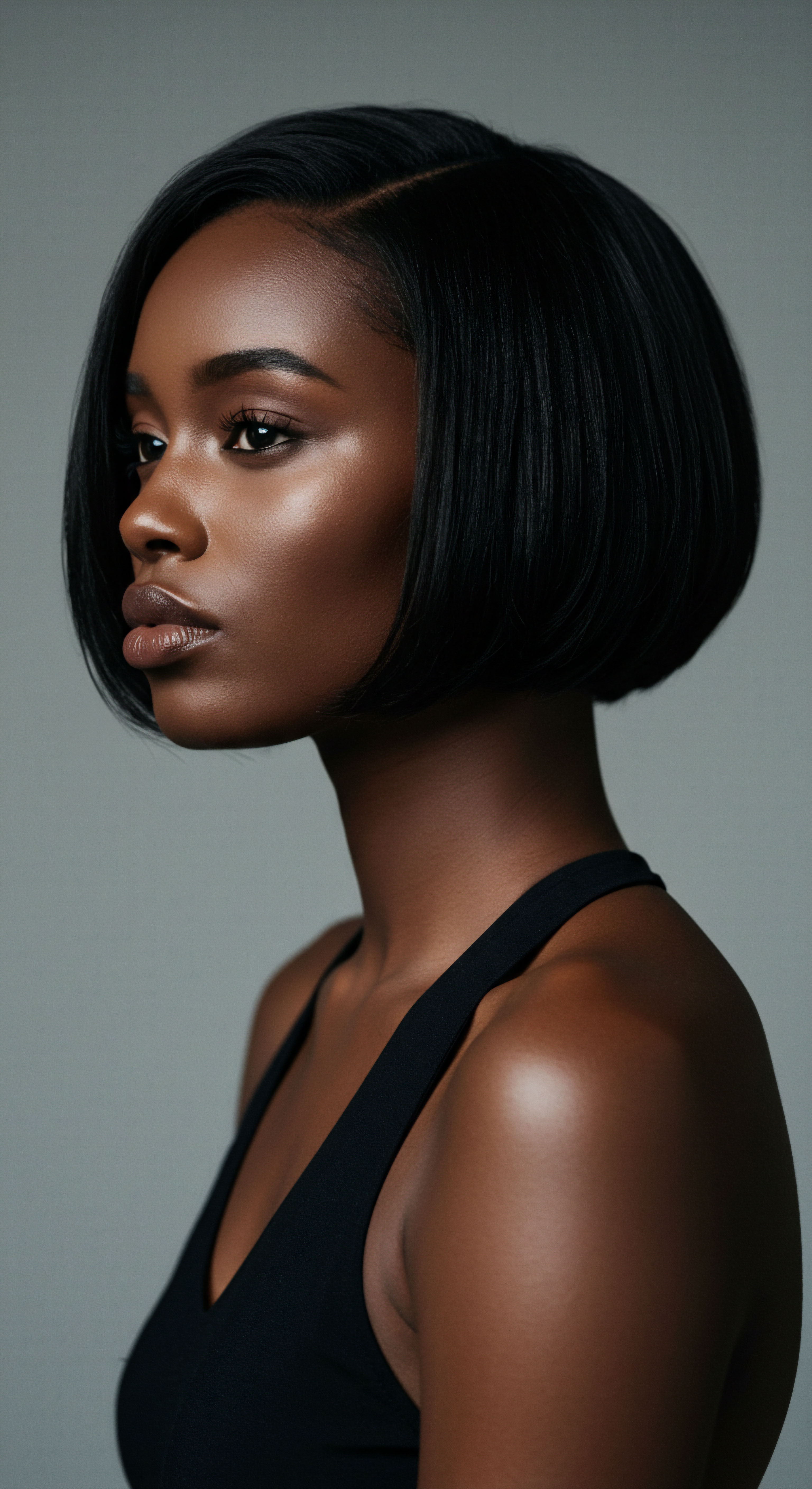
What Enduring Societal Echoes Can We Hear?
The Tignon Laws, though repealed after the Louisiana Purchase in 1803, cast a long shadow, contributing to a persistent societal policing of Black hair that continues to this day. This historical precedent set a tone where Black hair, in its natural state, was often deemed “unkempt,” “unprofessional,” or “distracting”. This perception laid groundwork for subsequent pressures on Black women to straighten their hair to conform to Eurocentric beauty standards, a phenomenon that gained momentum in the 19th and 20th centuries with the advent of hot combs and chemical relaxers.
The legal battle for hair freedom continues, with initiatives like the CROWN Act seeking to prohibit discrimination based on hair texture and protective styles. This modern legislation directly confronts the lingering attitudes rooted in historical decrees like the Tignon Laws, demonstrating that the aesthetic choices of Black women remain a site of both personal expression and systemic challenge. The very act of wearing natural hair or traditional styles can be seen as a continuation of the defiance shown by the women of New Orleans centuries ago.
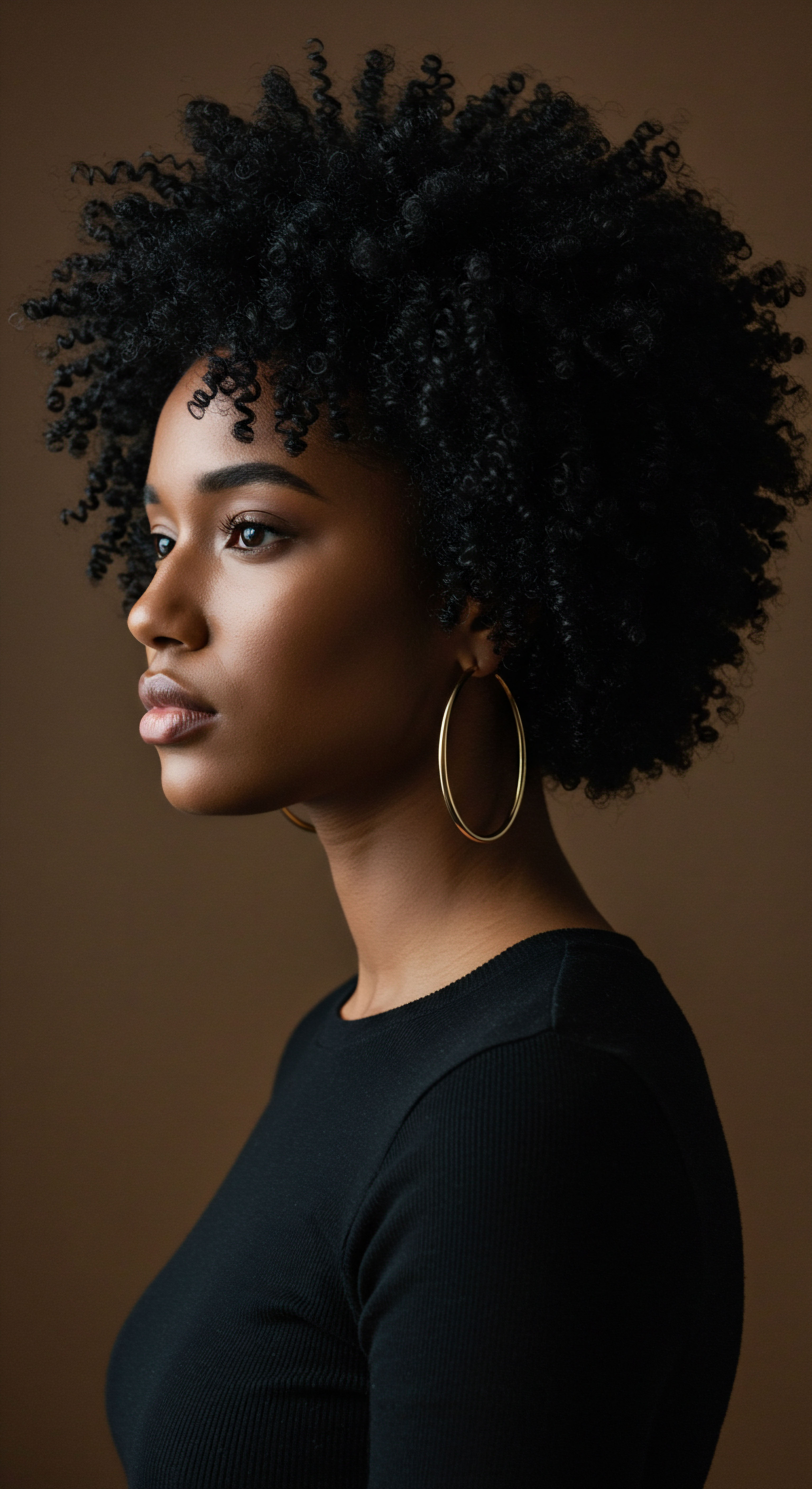
How Did the Laws Influence Hair as a Political Statement?
The Tignon Laws inadvertently cemented hair as a powerful political statement for Black women. By attempting to strip away visible markers of status and beauty, the laws inadvertently transformed the headwrap into a potent symbol of resistance and cultural pride. This historical moment underscored a fundamental truth ❉ for Black women, hair is often more than simply an aesthetic choice; it is a profound declaration of identity, heritage, and defiance against oppressive norms.
This concept extends beyond the Tignon Laws to broader historical contexts. During slavery, for example, cornrows were sometimes used to conceal food, gold, or even escape routes, turning hair into a tool of survival and coded communication. The “Black is Beautiful” movement of the 1960s saw the Afro emerge as a symbol of Black pride and power, directly challenging Eurocentric beauty ideals. These historical instances collectively reveal a continuous thread of hair being used as a medium for self-determination and political assertion.
The Tignon Laws, in particular, provided a unique case study in forced adaptation leading to elevated artistry. The women of New Orleans, by making their mandated coverings into elaborate statements, demonstrated that control over appearance, even when externally imposed, could be subverted through creative agency. This deep historical connection provides context for why discussions around Black hair remain so charged and significant today, often carrying the weight of centuries of struggle and resilience.
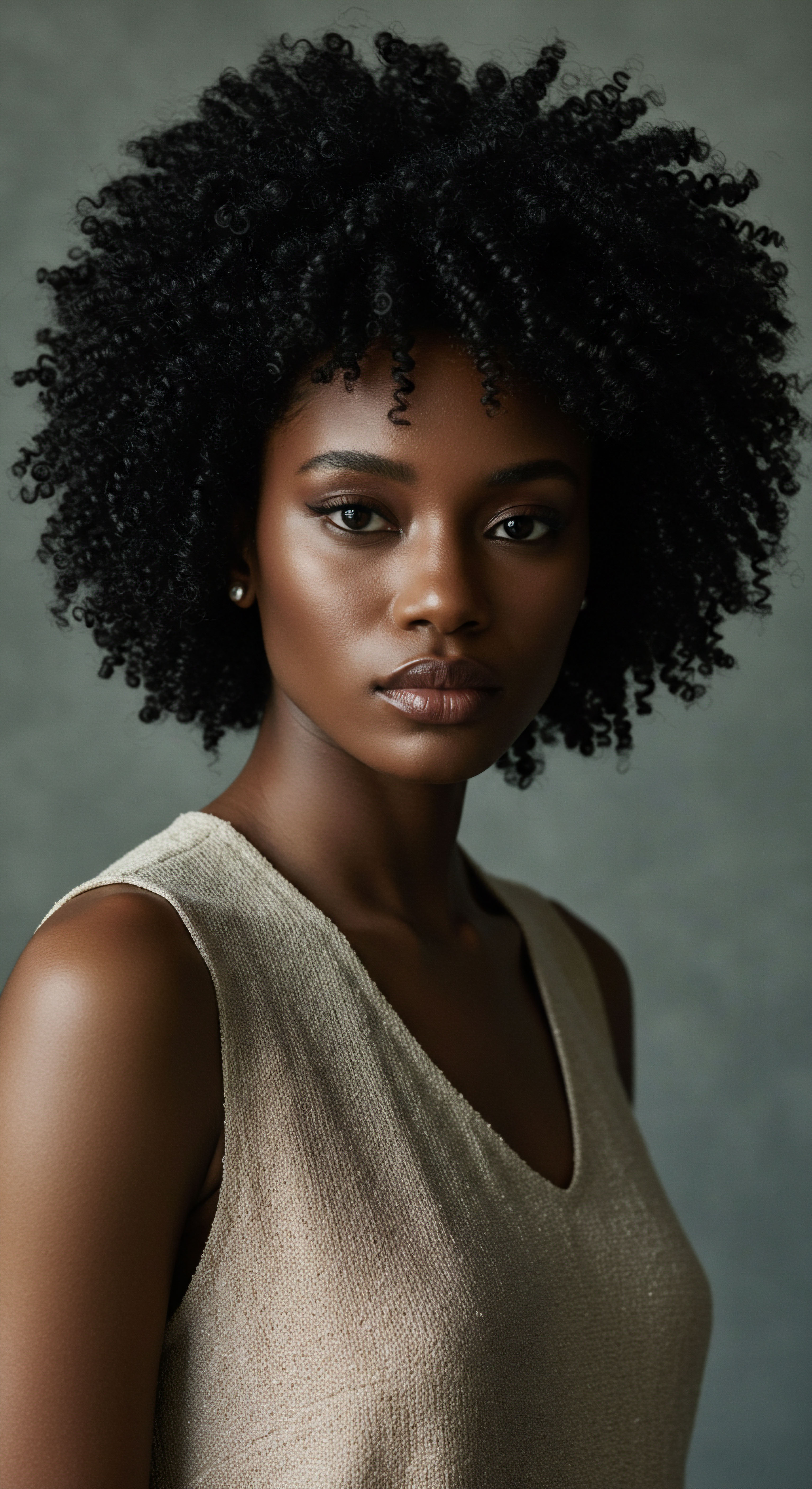
Can Modern Hair Regulations Echo Historical Oppression?
Indeed, contemporary hair regulations, whether formal or informal, can echo the historical oppression seen with the Tignon Laws. Policies in schools or workplaces that deem natural Black hairstyles “unprofessional” or “distracting” mirror the colonial intent to control Black women’s appearance and subordinate their identity. The persistence of texturism, a prejudice against more tightly coiled hair textures, also demonstrates how Eurocentric beauty standards continue to shape perceptions and create divides even within marginalized groups.
The ongoing struggle for legislative protections, such as the CROWN Act, highlights the necessity of recognizing hair discrimination as a form of racial discrimination. These legal efforts aim to dismantle the lingering systemic biases that trace their lineage back to historical decrees like the Tignon Laws, affirming the right of individuals to express their cultural identity through their hair without fear of penalty or exclusion.

How Did Tignon Laws Shape Hair Aesthetics?
The Tignon Laws shaped hair aesthetics by forcing a redirection of creative expression from visible hair to elaborate head coverings. This redirection, however, did not diminish the aesthetic impulse but rather intensified it, transforming the tignon itself into a canvas for opulent display and cultural defiance. Before the laws, elaborate natural hairstyles, often adorned, were prevalent among free women of color, signifying their status and beauty. The laws mandated concealment, but the response was a heightened artistry in headwrapping, utilizing luxurious fabrics, intricate knots, and embellishments.
This led to a distinct aesthetic where the covered head became a statement, influencing fashion trends and even being adopted by some white women. The laws, therefore, did not destroy an aesthetic; they compelled its transformation, creating a new, resilient visual language that continues to resonate in contemporary headwrap culture.
- Shift in Focus ❉ The aesthetic attention shifted from exposed natural hair to the art of the headwrap.
- Heightened Creativity ❉ Women invested immense creativity in styling tignons with rich materials and complex designs.
- Symbolic Power ❉ The tignon transcended its oppressive intent, becoming a symbol of resistance, cultural pride, and beauty.
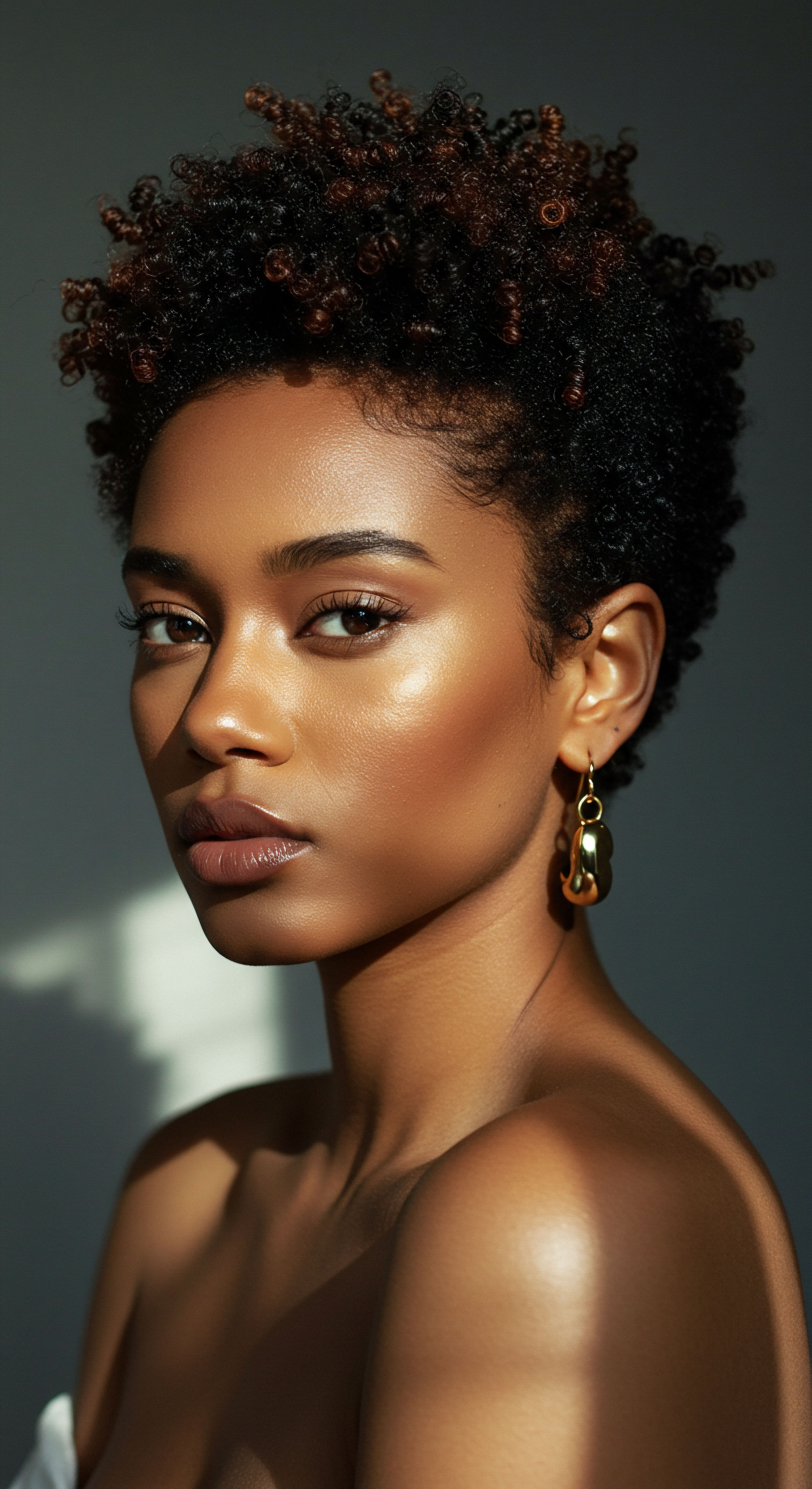
Reflection
The story of the Tignon Laws is more than a historical footnote; it is a profound narrative woven into the very fabric of textured hair aesthetics and the enduring spirit of those who wear it. It reminds us that beauty, particularly for Black women, has often been a battleground, a space where personal expression meets societal control. Yet, from the depths of attempted suppression, a vibrant, resilient artistry emerged, proving that the human spirit, when confronted with limits, often finds new, more powerful ways to shine.
The legacy of the tignon lives on, not merely as a historical relic, but as a living testament to the power of cultural pride, creative defiance, and the undeniable truth that true beauty cannot be legislated away. It stands as a gentle, yet firm, reminder that our hair, in all its varied forms, is a crown, a connection to ancestry, and a declaration of selfhood that no law can truly dim.

References
- Bird, Stephanie Rose. Light, Bright, and Damned Near White ❉ Biracial and Triracial Culture in America. Praeger, 2009.
- Gould, Virginia M. The Devil’s Lane ❉ Sex and Race in the Early South. Oxford University Press, 1997.
- Klein, Sybil. Creole ❉ The History and Legacy of Louisiana’s Free People of Color. Louisiana State University Press, 2000.
- Piesie, Kofi. Africa’s Hair ❉ Before, During And After Slavery. Kofiesie Publishing, 2023.
- Tharps, Lori L. and Ayana Byrd. Hair Story ❉ Untangling the Roots of Black Hair in America. St. Martin’s Press, 2001.
- Winters, Lisa Ze. The Mulatta Concubine ❉ Terror, Intimacy, Freedom, and Desire in the Black Transatlantic. University of Georgia Press, 2015.
- Ngandu-Kalenga Greensword, Sylviane. “Historicizing black hair politics ❉ A framework for contextualizing race politics.” Sociology Compass, vol. 16, no. 12, 2022.
- Johnson, T. A. & Bankhead, T. “Hair It Is ❉ Examining the Experiences of Black Women with Natural Hair.” Open Journal of Social Sciences, vol. 2, 2014.